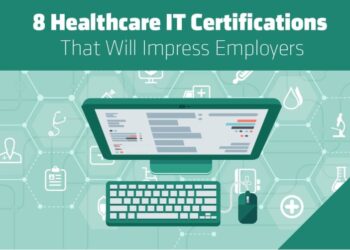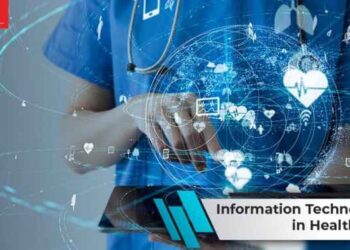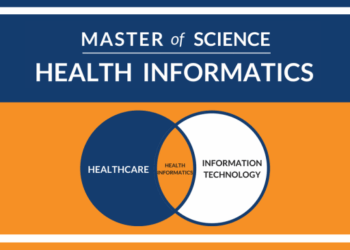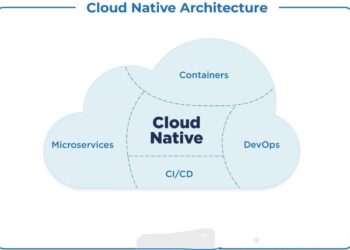Pros and Cons of Health Information Technology in Healthcare sets the stage for this enthralling narrative, offering readers a glimpse into a story that is rich in detail and brimming with originality.
As we delve deeper into the benefits and drawbacks of integrating Health Information Technology in healthcare, a world of possibilities and challenges unfolds.
Pros of Health Information Technology in Healthcare

Health Information Technology plays a crucial role in improving patient care by facilitating better coordination and communication among healthcare providers. This technology enables quick access to patient information, leading to more informed decision-making and personalized treatment plans.
Enhanced Communication Between Healthcare Providers
- Health Information Technology allows for seamless communication between different healthcare professionals, leading to better coordination of care for patients.
- Through electronic health records and telemedicine platforms, healthcare providers can easily share patient information, test results, and treatment plans in real-time.
- Improved communication helps reduce medical errors, duplication of tests, and delays in treatment, ultimately enhancing the quality of patient care.
Streamlining Patient Information Access with Electronic Health Records
- Electronic health records consolidate patient information in one secure digital platform, making it easily accessible to authorized healthcare providers.
- Healthcare professionals can quickly retrieve patient history, diagnoses, medications, and test results, leading to more efficient and accurate decision-making.
- Electronic health records also enable patients to access their own health information, empowering them to actively participate in their care and make informed decisions.
Increased Efficiency in Healthcare Delivery
- Health Information Technology automates administrative tasks, such as appointment scheduling, billing, and claims processing, reducing paperwork and streamlining workflow.
- By digitizing medical records and implementing electronic prescribing systems, healthcare facilities can save time, improve accuracy, and enhance patient safety.
- Efficient healthcare delivery results in faster diagnoses, timely treatments, and better outcomes for patients, ultimately improving the overall healthcare experience.
Cons of Health Information Technology in Healthcare
While Health Information Technology offers numerous benefits, there are also several drawbacks that need to be considered.
Potential Privacy and Security Concerns
One major issue with Health Information Technology is the potential for privacy breaches and security concerns. As more patient data is digitized and stored electronically, there is an increased risk of unauthorized access to sensitive information. This can lead to identity theft, fraud, and other malicious activities.
Challenges in Implementation
Healthcare providers often face challenges when implementing new Health Information Technology systems. This includes the significant cost of purchasing and maintaining these systems, the need for extensive training for staff members, and the disruption to workflow during the transition period.
Resistance to change from healthcare professionals can also hinder successful implementation.
Risks of Data Breaches and Cyber Attacks
One of the most concerning risks associated with Health Information Technology is the possibility of data breaches and cyber attacks. Healthcare organizations are prime targets for hackers due to the valuable personal and financial information stored in their systems. A breach can result in compromised patient data, financial loss, damage to reputation, and legal consequences.
Impact on the Doctor-Patient Relationship
Health Information Technology can have an impact on the doctor-patient relationship. Some patients may feel that the use of technology during consultations creates a barrier between them and their healthcare provider. The reliance on electronic health records can also lead to less face-to-face interaction and a perceived decrease in personalized care.
Impact on Healthcare Costs
Health Information Technology (Health IT) has the potential to significantly impact healthcare costs by improving efficiency, reducing unnecessary procedures, and streamlining administrative tasks. This can lead to cost savings for both healthcare providers and patients.
Cost Reduction through Efficiency
- Health IT systems can automate and streamline processes, reducing the time and resources needed to perform tasks such as scheduling appointments, ordering tests, and managing patient records.
- By digitizing health records and making them accessible electronically, healthcare providers can avoid duplicate tests and procedures, leading to cost savings.
- Electronic prescribing systems can help prevent medication errors, reducing the need for costly treatments due to adverse drug reactions.
Financial Implications of Health IT Implementation
- While there is an initial cost associated with implementing Health IT systems, the long-term financial benefits can outweigh the upfront investment.
- Health IT can lead to lower administrative costs, reduced paperwork, and improved billing accuracy, resulting in overall cost savings for healthcare organizations.
- Health IT solutions can also help in identifying high-risk patients and providing proactive care, which can prevent costly emergency room visits and hospital readmissions.
Cost-Effectiveness of Health IT Solutions
- Studies have shown that Health IT solutions can be more cost-effective in the long run compared to traditional healthcare practices.
- Electronic health records can improve coordination of care, reduce medical errors, and enhance patient outcomes, leading to lower healthcare costs over time.
- Telemedicine and remote monitoring technologies enabled by Health IT can reduce the need for in-person visits, saving patients time and money while still receiving quality care.
Patient Engagement and Empowerment
Health Information Technology (HIT) plays a crucial role in empowering patients to take control of their health by providing them with access to their medical information, resources, and tools to actively participate in their care.
Role of Patient Portals
Patient portals are secure online platforms that give patients the ability to view their medical records, schedule appointments, communicate with healthcare providers, request prescription refills, and access educational materials. By having easy access to their health information, patients are more engaged in their care, leading to better health outcomes.
Facilitating Shared Decision-Making
HIT tools such as decision support systems and electronic health records enable healthcare providers to involve patients in the decision-making process regarding their treatment plans. Patients can access information about different treatment options, risks, and benefits, allowing them to make informed decisions aligned with their preferences and values.
Impact on Healthcare Outcomes
Patient engagement through HIT has been shown to improve healthcare outcomes, including increased patient satisfaction, adherence to treatment plans, and overall health management. By actively participating in their care and having access to their health data, patients are more likely to follow through with recommended treatments, resulting in better health outcomes and reduced healthcare costs.
Last Recap
In conclusion, the landscape of healthcare is evolving rapidly with the integration of Health Information Technology, presenting both opportunities and obstacles. As we navigate this intricate terrain, the balance between innovation and caution becomes ever more crucial for the future of healthcare.
FAQs
What are the privacy concerns related to Health Information Technology?
Privacy concerns may arise due to the potential for unauthorized access to sensitive patient data stored in electronic health records. Implementing robust security measures is essential to mitigate these risks.
How does Health Information Technology impact the doctor-patient relationship?
Health Information Technology can sometimes create a barrier in the doctor-patient relationship by shifting focus to technology rather than direct interaction. However, it also allows for better coordination and communication in certain situations.
Can Health Information Technology reduce healthcare costs?
Yes, Health Information Technology has the potential to reduce healthcare costs through improved efficiency, streamlined processes, and better resource utilization. However, initial implementation costs may be a barrier for some organizations.











